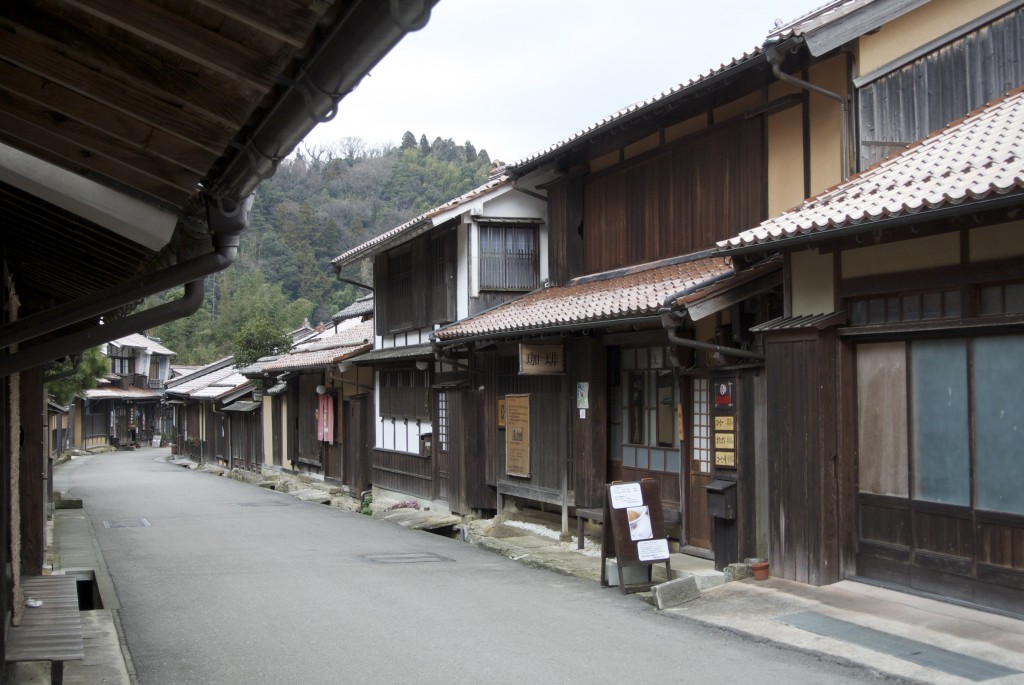
The district of Omori in Oda City, once the head town of the Silver Mine
Part of the World Heritage site at Iwami is the small district of Omori, once the main town of the mineworks. It is here that the administrators, merchants and craftsmen lived, and it still retains an Edo-era atmosphere. Some of the houses have been tastefully converted into cafes and souvenir shops. There’s a well-preserved samurai house, but its modest proportions are dwarfed by the thirty-room Kumagai merchant house, which shows just how profitable the mining was for some.
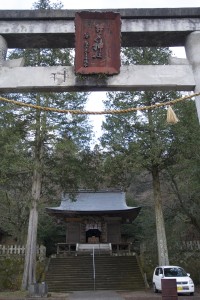
Ido Shrine, dedicated to the benefactor Ido Heizaemon
There are a couple of interesting shrines in Omori, one being the Ido Jinja which was built to honour a great benefactor of the region. Ido Heiazemon (1672-1733) was appointed Intendant of the mine in 1731, at a time when famine was plaguing the region. He had arrived from Edo to run the mine, but was so shocked by conditions that he used up his personal fortune in trying to help local people.
Heiazemon also opened up the rice stores to distribute to the populace, at personal risk since he did not have permission of the Tokugawa, and subsequently promoted the growing of sweet potato as an alternative source of food more suited to the terrain.
Because he had acted unilaterally, the Tokugawa shogunate arrested him but could not execute him because of his popularity. Conveniently for the shogunate, Heizaemon died at this time – the shogunate said he died of a disease, but some think he committed hara-kiri.
Another of the shrines in Omori is the Kigami Jinja, the current buildings of which date back to 1812. It’s the largest shrine in the district, housing the guardian deity of Omori which is Oomononushi (aka Okuninushi). You can tell it’s an Izumo deity by the large shimenawa rice rope hung before the worship hall. There’s also a nineteenth-century meditation hall with a multil-layered roof designed to emulate the Kamedo Tenmangu Shrine in Tokyo.
Inside the shrine is unusually colourful, with paintings on the walls and ceiling. The latter features a dragon which is said to roar when you clap your hands, though I couldn’t hear it myself. Perhaps it was sleeping.
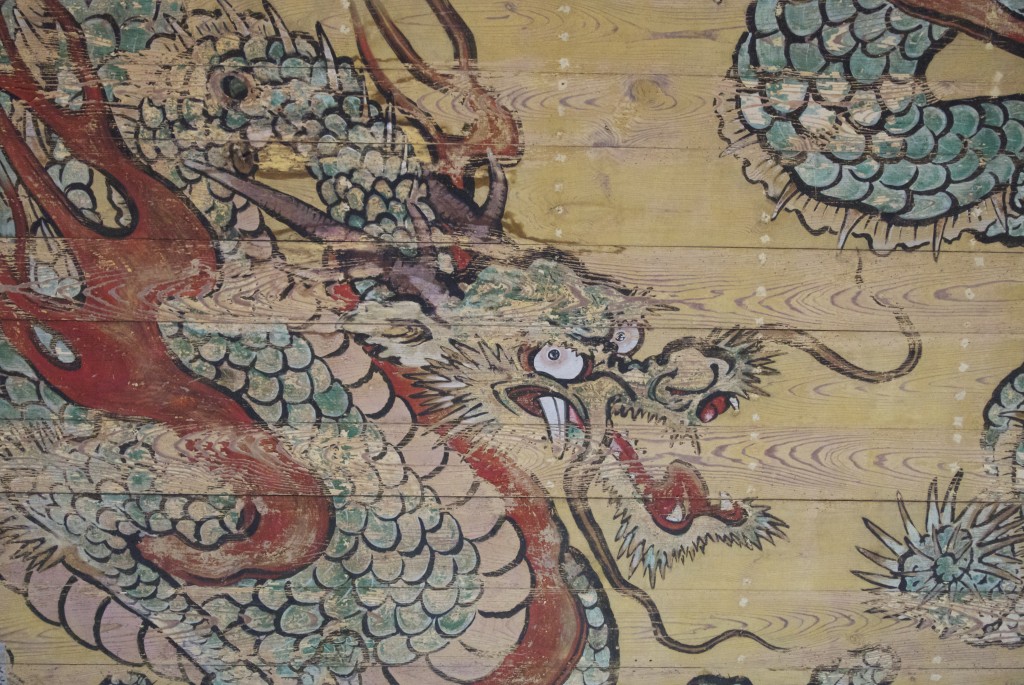
The roaring dragon of Kigami Jinja
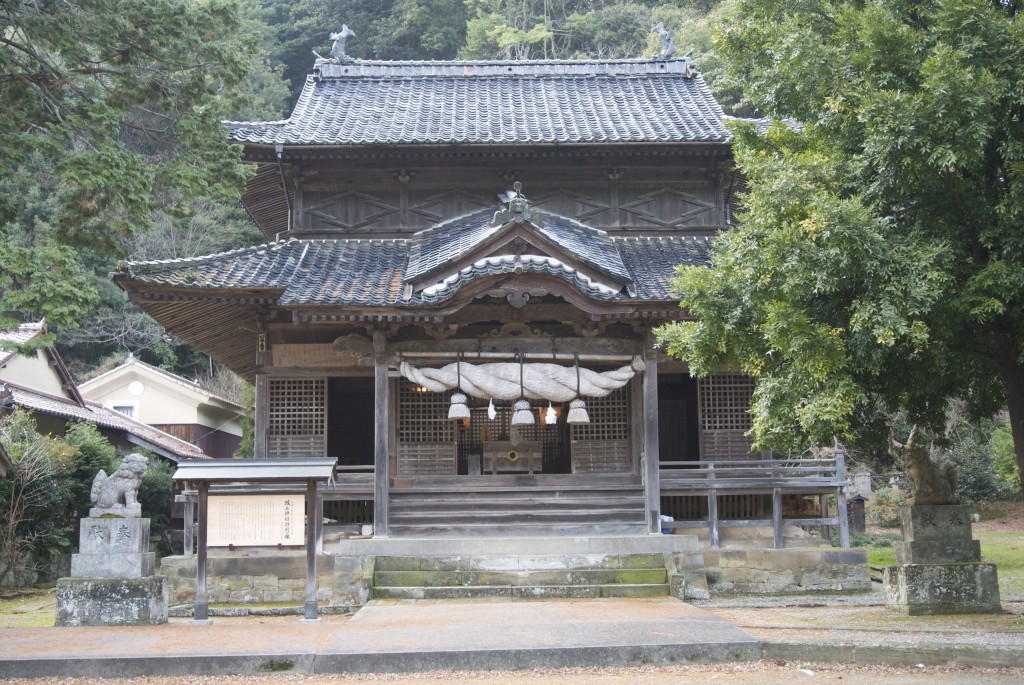
The main building with its characteristic thick Izumo-style rice rope
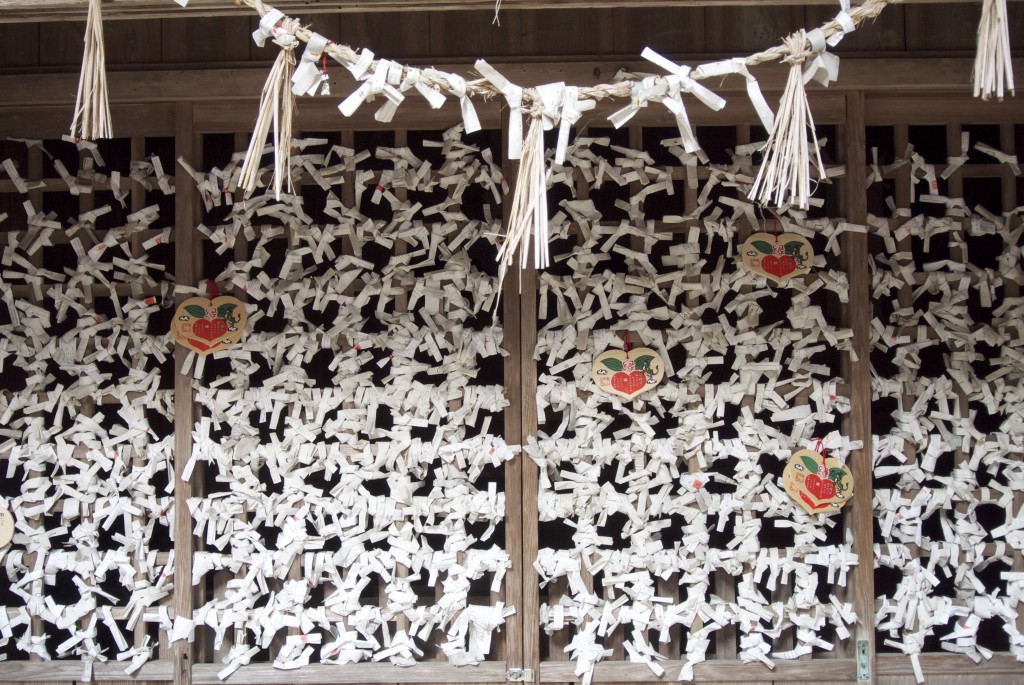
Fortune slips tied on the lattice doors of a building to house the mikoshi
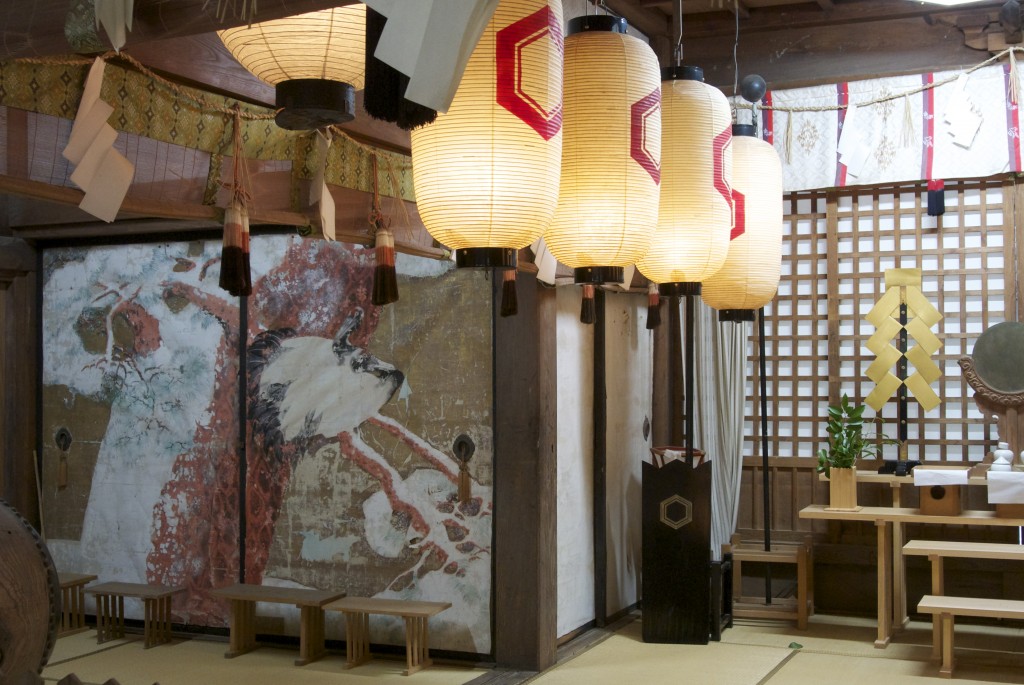
Faded paintings on the fusuma inside the Worship Hall
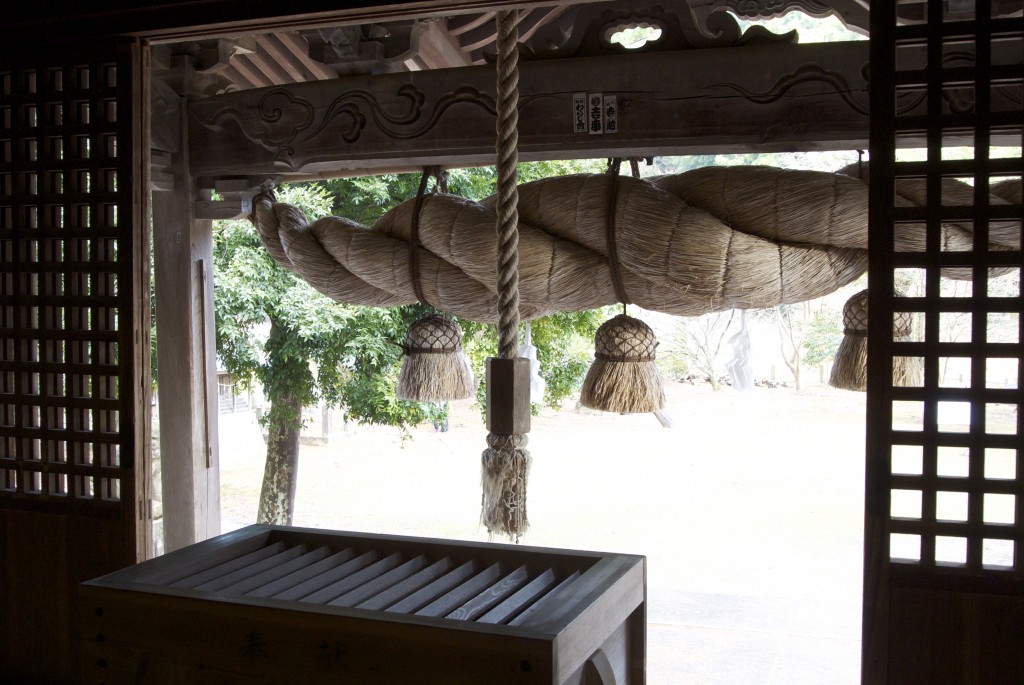
From inside the Worship Hall looking out past the shimenawa rice rope

Leave a Reply